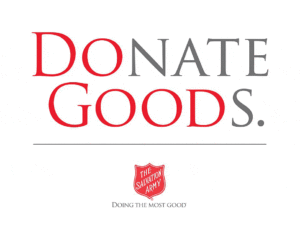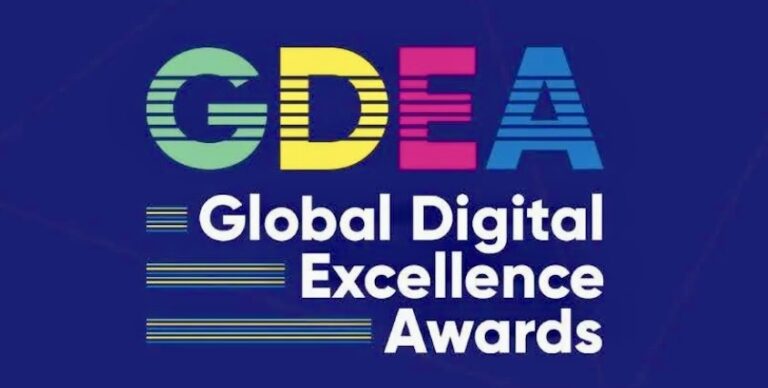Today, we are going to discuss the 5 core elements of a solid brand.
Before we do, it’s important to understand what a brand really is. This will bring home a deep understanding of why each of the following elements are so critically important to your marketing efforts.
What Is A Brand Exactly?
Many feel their brand is simply their logo. Others might include their tagline, which gets them closer to the truth… But still not entirely there.
These elements… Logos, taglines, even fonts, and colors…
Are all important.
And yet each is merely a piece that helps direct and influence what your brand REALLY is:
How your audience perceives you. Your brand is the recognizable FEELING your business evokes.
Your brand is the recognizable FEELING your business evokes.
Let’s explore each of these critical elements, and unpack why each is so helpful in shaping the perception others have about who you are, what you do, and how and why you do it.
1. Your Logo.
Okay… Let’s get this out of the way first. Your logo is super important. You need a logo. But most businesses stop here, and in doing so, they don’t really have a brand. What they have is a logo. (And often, not a good one!)
We can unpack the specific elements of a good logo in another post… For now, here are some high-level considerations:
- Make sure you have editable vector (.AI or .EPS) versions of your logo. If your logo incorporates a raster image (it shouldn’t) this may not be possible… But if it does, at the very least make sure your raster images are at a high resolution, 300 DPI or higher. If your original logo artist provided raster (.JPEG, .TIFF, .PNG, .PSD) files, you may need to hire an illustrator to trace them into vectors. This is important, for larger applications. If you ever plan on doing billboards, or print advertisements, or vehicle artwork… You’re definitely going to struggle if all you have is a low-resolution PSD or JPEG. Your art will end up being blurry and pixelated when it’s blown up. With vector art, you could enlarge your logo to the size of a building, and it will look as crisp as the day it was born.
- Make sure you have versions of your logo in plain black, and also reversed in plain white (against a black background), and make sure both versions still work! If all you have is one file with some crazy cool-looking gradient on it, you need to dig deeper. Eventually, you may need one-color applications of your logo (for hats, or perhaps mail) and it would be better to know now if your “plain” logo creates the impact you’re looking for.
- Make sure your logo works in smaller sizes. Again: on a business card, your logo may appear one inch by one inch in size, at a maximum. So print it out. Does it still work? Can you still read it?
2. Core Messaging.
A great logo will make you more comfortable with what people SEE… But have you given thought to what they read? Or what they hear?
What do you “say” in conjunction with your logo?
In any businesses, you should consider the following “copy” elements at the very least:
A Strapline.
Your Strapline (or Tagline) is a short, sweet, catchy, or memorable phrase that clearly communicates your core brand message. The goal is to help people understand as much about your business as possible, as quickly as possible.
You’ll often find Straplines nestled next to (or under) logos, and featured in print ads, television commercials, and internet ads.
In our experience, the shorter a Strapline is, the better it is.
Three great, short Straplines from globally recognized brands… Can you name them?
Great Straplines also tend to convey more than one thing. A great example of this is Salvation Army’s “Do Good/Donate Good” messaging:
Another great Strapline, this time from Salvation Army
An Elevator Pitch.
This is sort of like an extended version of your Strapline, so you have a little more wiggle room to say a little more here.
Your Elevator Pitch might show up on the lips of your salespeople when they’re networking. Or on the homepage of your website.
Here’s a couple of great formulas to get you started:
“[BRANDNAME] helps [DESCRIBING WORD][IDEAL AUDIENCE]
get [DESIRED OUTCOME] so they can [REAL DESIRE/GOAL]”
“[BRANDNAME] helps [DESCRIBING WORD][IDEAL AUDIENCE]
get [DESIRED OUTCOME] without [STRUGGLE/PAIN/FRUSTRATION]”
As an example, one might lean on these formulas to say something like this:
“Job Tsunami helps motivated job-seekers connect with businesses that matter, so they can get the job of their dreams.”
Or this…
“Erik’s Discount Life Insurance provides affordable life insurance plans online in just minutes, so you can sleep better at night without the hassle of long lines or endless forms.”
3. Customer Avatars/Profiles:
Years ago, my father told me the story of a young man who came to his door, selling retirement planning.
This young man was wearing hip, urban-style clothing. He had many tattoos. And my father was immediately not buying a single thing.
He made the call before the guy even opened his mouth.
What could this guy possibly understand about my father’s retirement goals and fears? How could my father trust a business who would send someone straight from a music video to his front doorstep?
This story has stuck with me for years.
It may not be fair, but it’s true. I’m telling you this as someone who likes fresh urban clothing, and who wears several permanent tattoos. People are fickle. Especially in today’s world.
Most of us make immediate (often subconscious) snap “judgement calls” on how we feel about brands, businesses, and even people. Malcolm Gladwell called this “Thin Slicing” in his book “Blink.”
Most of us make immediate (often subconscious) snap “judgement calls” on how we feel about brands, businesses, and even people.
You must understand who you’re selling to, so you can look the part, and say the right things. This lets your audience know that you are to be trusted, that you understand, that you belong.
The way to do this is to create a Customer Avatar.
Start by picturing your ideal customer in your head. Not as a fuzzy, nebulous group, but as a single person.
- What’s their name?
- Where do they live? Are they married? Do they have kids?
- What do they do for a living? How much do they make?
- What car do they drive?
- Where did they grow up, and how? Where did they go to college?
- What are their dreams and desires?
- What are their worries and concerns?
We really dig into this at AIMCLEAR.
Our Avatar worksheets have full backstories on people like Becky Littlejohn from Omaha, Nebraska, and why she wants to start a lifestyle blog. (HINT: It’s because she’s smart as hell, and bored being a stay-at-home mom to her twins.)
Often we will take a stock photo of an avatar and print it, and staple it to the printed document as we work on messaging constructs.
Speaking of messaging…
4. Expanded Messaging.
Your Strapline and Elevator Pitch are a great start, but we all know that content is king. You need to dig deeper for the robust range of messaging angles that digital marketing content is built upon.
A great place to begin is with specific messaging for different buyer states. After all, some people are going to be familiar with your product, and what it does… While others may not even know yet that they have the problem you solve.
This ties into content for different stages of your funnels as well. If someone has clicked on one of your ads, visited your website, and clicked around a little… They may be ripe for more nurture messaging.
Asking yourself these (and other) questions can help you quickly generate a more diverse messaging strategy.
- Why is what you do important?
- What problems do you or your product solve? (Chances are there are more than one)
- Who specifically is it for? (Again, you probably have more than one audience)
- What are your audience’s barriers to buying?
- What are they afraid of? Inspired by?
- Why should they buy your product over your competitors?
Combining the results of these exercises with testimonials, case studies, and glimpses into the personality of your company and your workers is a great way to ensure a steady stream of on-brand content.
5. A Standards Manual.
To a large degree, branding is about consistency and repetition. This creates a sense of comfort and familiarity. Familiarity breeds trust, and trust breeds sales.
As such, when the elements we’ve discussed in this post are mistreated or implemented inconsistently, it can cause serious damage to the credibility of your brand.
Enter the Standards Manual.
A Brand Standards Manual (or Style Guide) is basically the “bible” that outlines exactly how your brand should be visually and vocally represented. This document is the cornerstone to creating a consistent, recognizable brand.
An effective Brand Standards Manual will include rules for implementing all of the elements mentioned above, including:
- Specifics on how your logo should be treated for various applications…
- Specifics on your core messaging…
- Informed details on using images, icons, symbols, and brand drivers in your marketing…
- The exact approved CMYK/RGB and Pantone color values to be used in all marketing…
- A breakdown of approved fonts, and the spacing and kerning of how those fonts are treated.
With this document, your in-house teams and external vendors will always have everything they need to consistently speak to your brand across multiple channels and applications…
From embroidered hats to full-sized, full color billboards, print advertisements, and beyond.
So there you have it!
The five core elements to a solid brand.
Remember: Your brand lives in the minds of everyone who experiences your business… From investors and employees all the way through to the customers you serve.
The elements we’ve discussed here play a crucial part in shaping those perceptions.
Thoughts? Comments? Want to work together? Reach out and let us know.
Thanks for reading!











